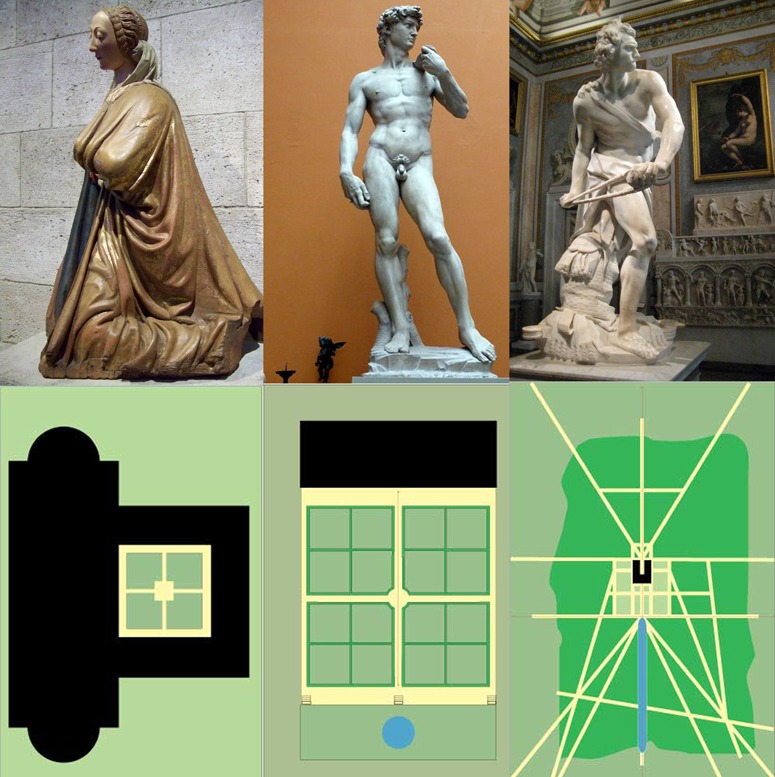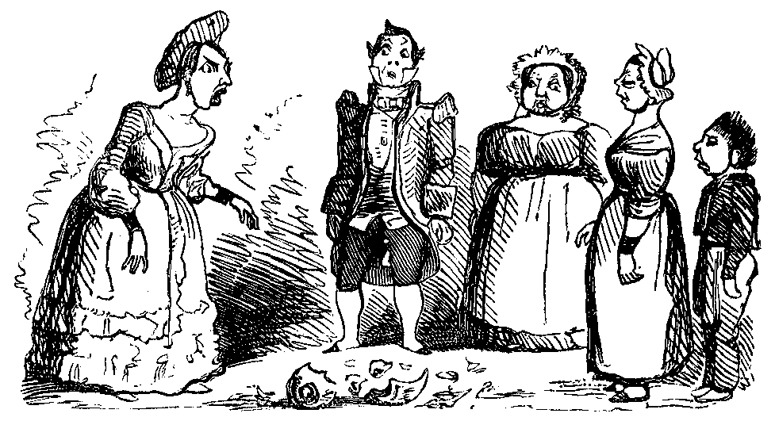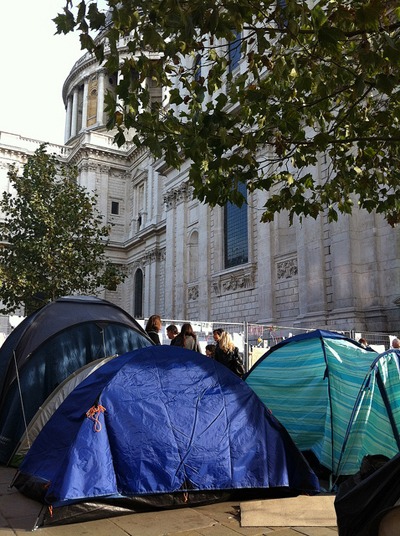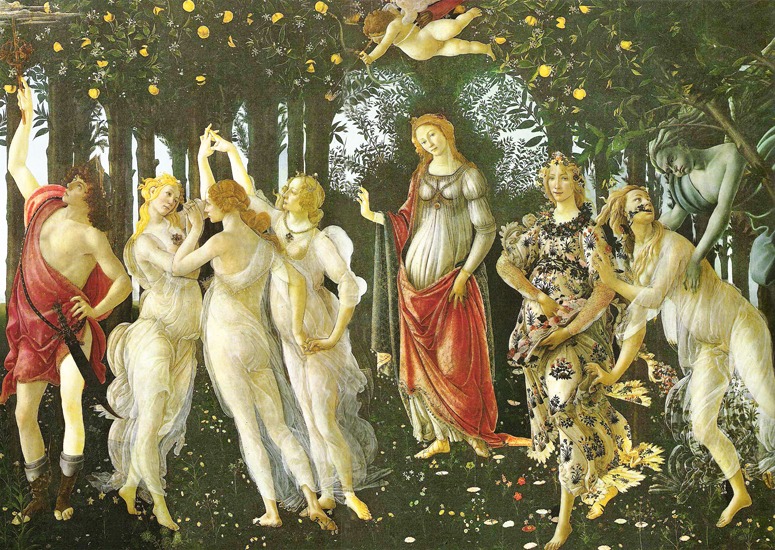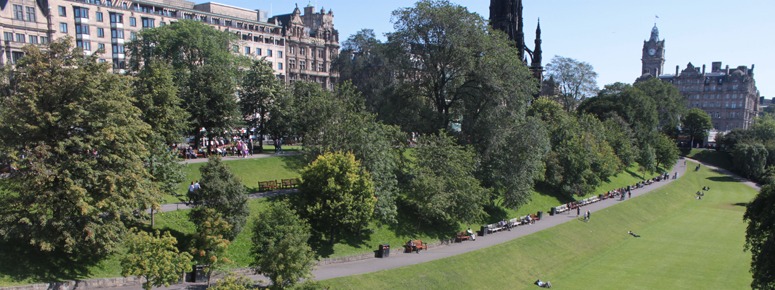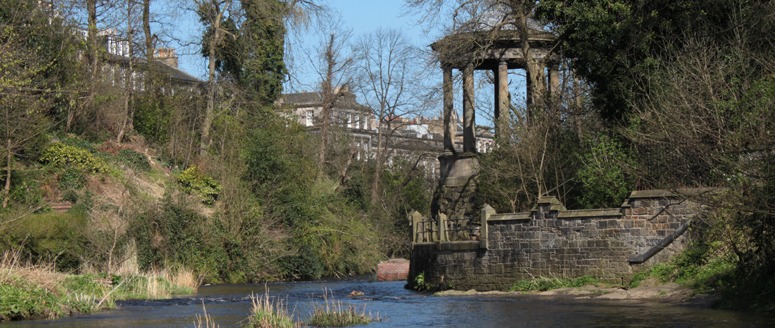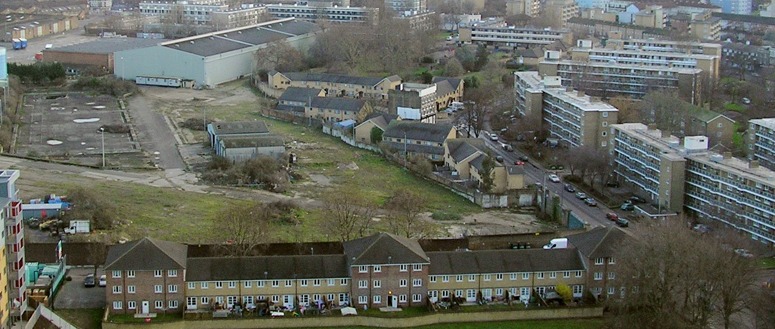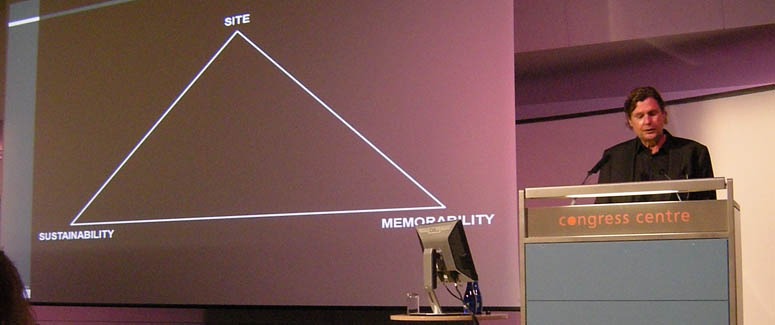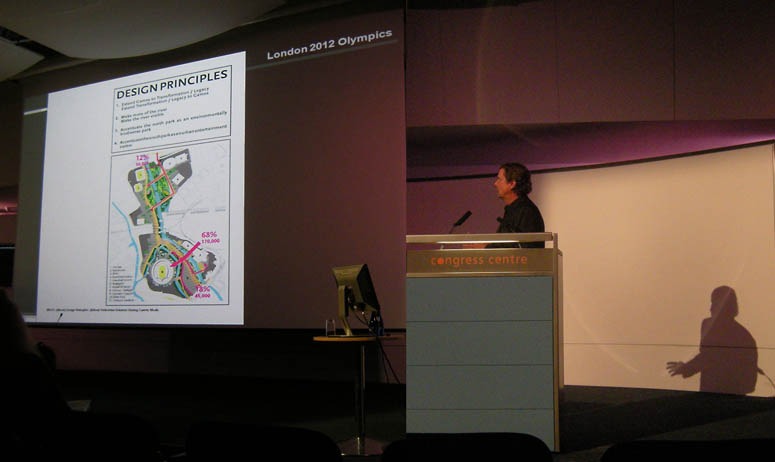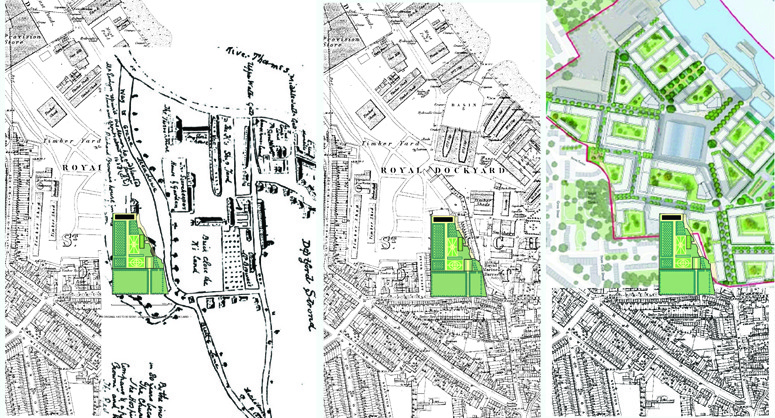
John Evelyn's garden superimposed on plans of the Convoys Wharf site in the seventeenth century, the nineteenth century and, one hopes not, the twentyfirst century
Steen Eiler Rasmussen concluded the second edition of his brilliant book
London: the Unique City with these prophetic words: ‘Thus the foolish mistakes of other countries are imported everywhere, and at the end of a few years all cities will be equally ugly and equally devoid of individuality. This is the bitter END’. So what would he think of the Hutchison Whampoa Master Plan for Convoys Wharf? He would detest it, utterly. The architects are
Aedas, who claim that ‘ We provide international expertise with innate knowledge and understanding of local cultures’. Evidently, this expertise does not extend to the local culture of Deptford – unless they think it is
the same as the culture of London/England/Europe or the World. The planning consultants, let it be recorded, is by
bptw . Their website promises ‘responsible architecture executed with imagination’. Maybe the firm can do this. Maybe the client’s brief made it impossible at Convoys Wharf. Or maybe what the project required was a firm of Urban Landscape Designers, rather than a firm which sees its main business as architecture. The architecture makes one yearn for the imaginative approach one sees in Dubai. The spatial pattern resembles that of the
Ferrier Estate in Kidbrooke, the planting design is what Chris Baines calls ‘a green desert with lollipops’. I am not an admirer of the scheme – and I much regret that John Evelyn’s design for Sayes Court has been cast into what Leon Trotsky called ‘the dustbin of history’. It is a quotation which gives us a lead into the origins of the Convoys Wharf design. In days gone by it might have graced a Parisian banlieue (like Sarcelles), a suburb of East Berlin – or even Moscow itself. With specific regard to the Sayes Court Garden, we should remember that (1) Evelyn, beyond doubt, was the greatest English garden theorist of the seventeenth century (2) Evelyn played a key role in introducing Baroque ideas on garden design to London (3) the Convoys Wharf site would never have come into public ownership were it not for the generosity of John Evelyn (4) Sayes Court was
very nearly the first property to be saved by the National Trust.
THEREFORE the Convoys Wharf site demands a context-sensitive urban landscape design.
Wikipamia shows the present condition of the Convoys Wharf site and the Sayes Court Estate. Also see the
Convoys Wharf Planning Application Documents.
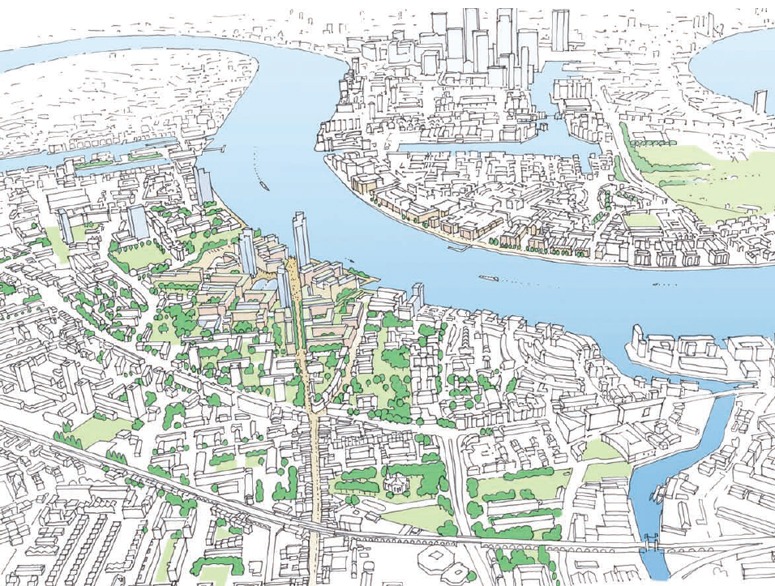
This drawing purports to show 'Landscape, Townscape and Visual Amenity' . Phooey

